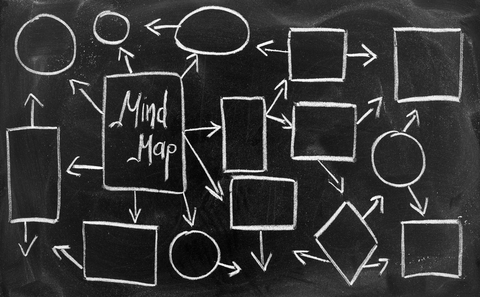
 A mind map is a diagram used to represent words, ideas, tasks, or other items linked to and arranged around a central key word or idea.
A mind map is a diagram used to represent words, ideas, tasks, or other items linked to and arranged around a central key word or idea.
Mind maps are used to generate, visualise, structure, and classify ideas, and as an aid to studying and organising information, solving problems, making decisions, and writing.
The elements of a given mind map are arranged intuitively according to the importance of the concepts, and are classified into groupings, branches, or areas, with the goal of representing semantic or other connections between portions of information. Mind maps may also aid recall of existing memories.
In a mind map, information is structured in a way that mirrors exactly how the brain functions — in a radiant rather than linear manner.
A study by Farrand, Hussain and Hennessey (2002) found that mind mapping improved the long-term memory of factual information in medical students by 10 percent.
A study by Holland et al (2003/2004) found mind mapping to be a useful technique for helping students plan and structure their essays and projects more effectively. Students were able to improve the structure, coherence and, consequently, the quality of their written work and were able to draw value from the technique for project managing practical work.
Research by Toi (2009) shows that mind mapping can help children recall words more effectively than using lists, with improvements in memory of up to 32 percent.
Author Tony Buzan suggests using the following guidelines for creating mind maps:
• Start in the centre with an image of the topic, using at least three colours.
• Use images, symbols, codes, and dimensions throughout your mind map.
• Select key words and print using upper or lower case letters.
• Each word/image is best alone and sitting on its own line.
• The lines should be connected, starting from the central image. The central lines are thicker, organic and thinner as they radiate out from the centre.
• Make the lines the same length as the word/image they support.
• Use multiple colours throughout the mind map, for visual stimulation and also to encode or group.
• Develop your own personal style of mind mapping.
• Use emphasis and show associations in your mind map.
• Keep the mind map clear by using radial hierarchy, numerical order or outlines to embrace your branches.






Leave a Reply